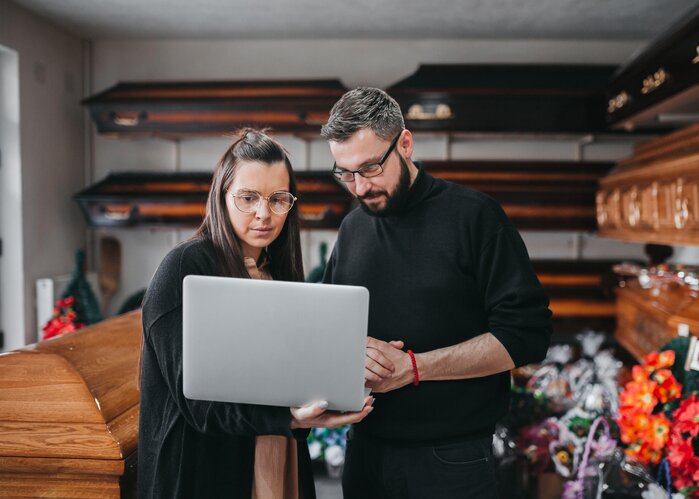(404) 312-6640
Funeral Service Professionals Need to be Cremation Specialists
No matter what you think about the evolution of the North American Funeral Rite, you have to acknowledge that cremation is, and has been for some time, a major part of society’s expectation of what happens when someone dies. As the demand for cremation services has increased over the past few decades, funeral professionals have responded in a variety of ways to meet their consumer’s expectations. Some have even tried to divert their community’s attention away from cremation, to no avail. Regardless, cremation is now fully integrated into our society’s funeral ideal and shows no signs of changing anytime soon. Funeral service professionals must now add Cremation Specialist to their long litany of talents.
Most funeral service professionals don’t operate cremation equipment, but thankfully, that is not required to have cremation expertise. Knowing what goes on at the crematory, by what means the decedent will travel through the process, and how your firm and the crematory assure the remains that start the journey are the same that are returned at the end will put the family’s mind at rest and create a sense of comfort and confidence that their loved one is in good hands.
One doubt many have, which can be alleviated from the start, is how the decedent’s identity will be confirmed, verified, and documented throughout the journey. This could be put into words during the removal or as part of the arrangement conference. Knowing and confidently clarifying both the ID process and the chain of custody protocols is good practice for a cremation professional. If you don’t feel confident outlining the process, talk to your crematory operators. They can walk you through everything in detail and even if you don’t have all of the steps perfectly memorized, sharing with your families that your crematory does indeed have a formal process that is followed consistently is expert-level knowledge. Most believe that cremation causes pollution. Any time something burns and heat is generated, emissions are produced, but the cremation professional takes an educated approach when answering inquiries regarding emissions and the environment. Modern cremation equipment is designed so well that (when properly maintained and properly operated) the emissions are minimal and insignificant. The sophisticated control systems and airflow design along with the physical design of the equipment assure minimum emissions. According to environmental experts, cremation is one of the lowest sources of pollution and, because of that, isn’t regulated by the US Federal EPA (but are regulated at the local level).
If one has to wait for something, they are undoubtedly going to want to know how long the wait will be. The variables involved in calculating how long it will take seem endless. How busy is the crematory at the moment? Are all of the necessary permits and authorizations in place? Is the deceased of average size or will there be extenuating circumstances that may delay the cremation? (For example, the decedent is a larger individual that will require special handling at the crematory). For the most part, if there are no barriers, the actual cremation takes between 1 and 3 hours to perform. There is also the time needed for processing and packaging the cremated remains. Keeping track of all of these variables can be cumbersome, but navigating all that is something a cremation professional does as part of their service.
Often families will have questions regarding the actual cremation process. Knowing the basics regarding how things work is not difficult. Cremation, by definition, is a thermal (mechanical or other dissolution) process that reduces deceased human or pet remains to bonelike fragments. The process also involves the further reduction of the remains via pulverization of the bonelike fragments into pieces that are usually no more than one-eighth inch. The temperatures involved range from 1400°F to 1800°F depending on the make and model of the equipment. All cremation equipment has multiple chambers that combust and re-combust what is produced during the process so the pollution that is created is eliminated before re-entering the atmosphere. For the most part, what goes back into the atmosphere is breathable, clean air.
Another important characteristic of a cremation specialist is their lack of assumption that the cremation family does not find value in more traditional funeral services. The cremation specialist knows it’s their duty to help the family find the right services to honor their loved one in concert with their choice of disposition. This may be nothing more than the removal of the deceased at the place of death, curating the necessary forms and authorizations, and the actual cremation — but it may be more. It may be a full-on “traditional” funeral service complete with embalming, visitation, rosary, livery, procession, church or chapel service before the cremation, and a graveside committal service. It may be something in between. The funeral director cremation specialist is, at their very core, a funeral director regardless of the choice of disposition, and facilitates an event appropriate for their families. With any consumer transaction, the more you know about the products and services you offer, the happier your client will be. If someone wants to buy a new Ford F-150 pickup they are going to head to the Ford dealer, not the Volkswagen showroom. Value is perceived (and directly related to) the expertise of the professional facilitating the transaction and funeral service is no exception.
Larry Stuart, Jr. is the Principal and Founder at Raven Plume Consulting, President and Founder at Cremation Strategies and Consulting, and the former President at Crematory Manufacturing & Service, Inc., a leading manufacturer of technologically advanced cremation equipment. Raven Plume and Cremation Strategies help funeral professionals serve more families better by providing expert leadership, planning, organization, training, education, process improvement, and strategic planning for the funeral profession. Through outreach and transparency, Larry works to educate our professional peers, our clients, and the public about funeral service, its indispensability, its history, cultural significance, and best practices to advance the success of funeral professionals and the safety, efficiency, and effectiveness of their facilities.






Comments